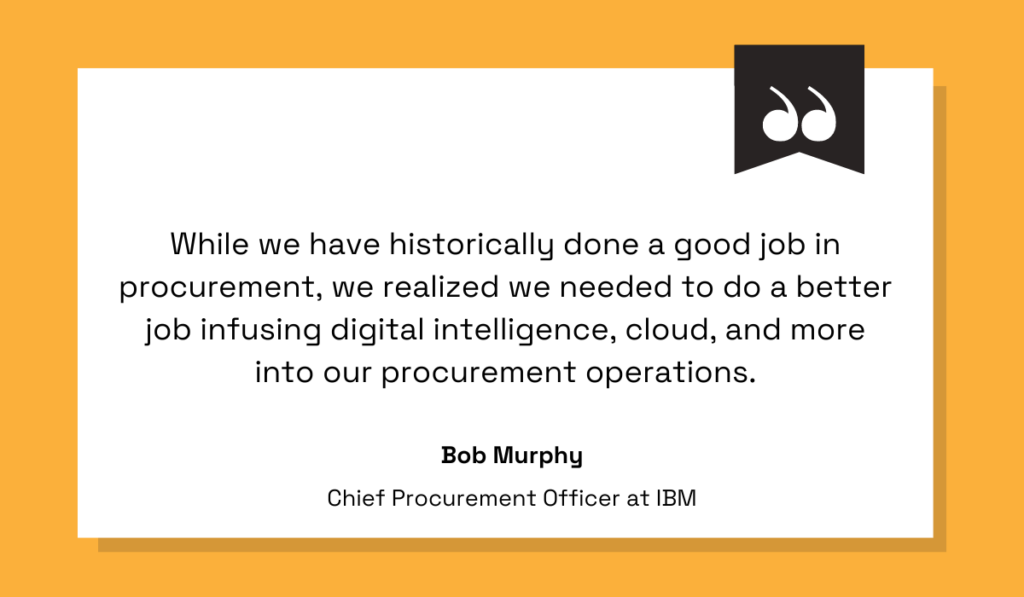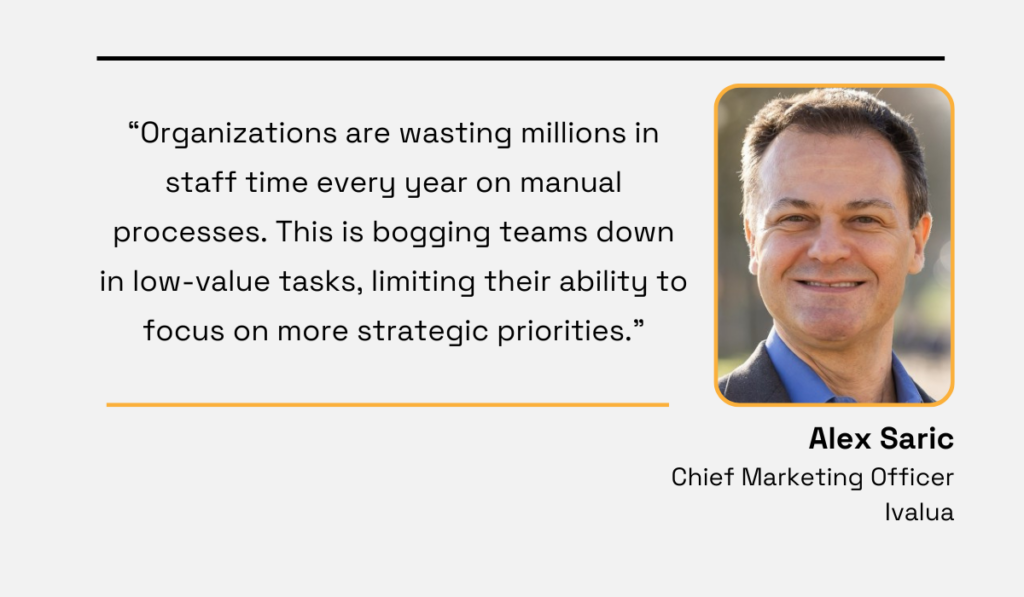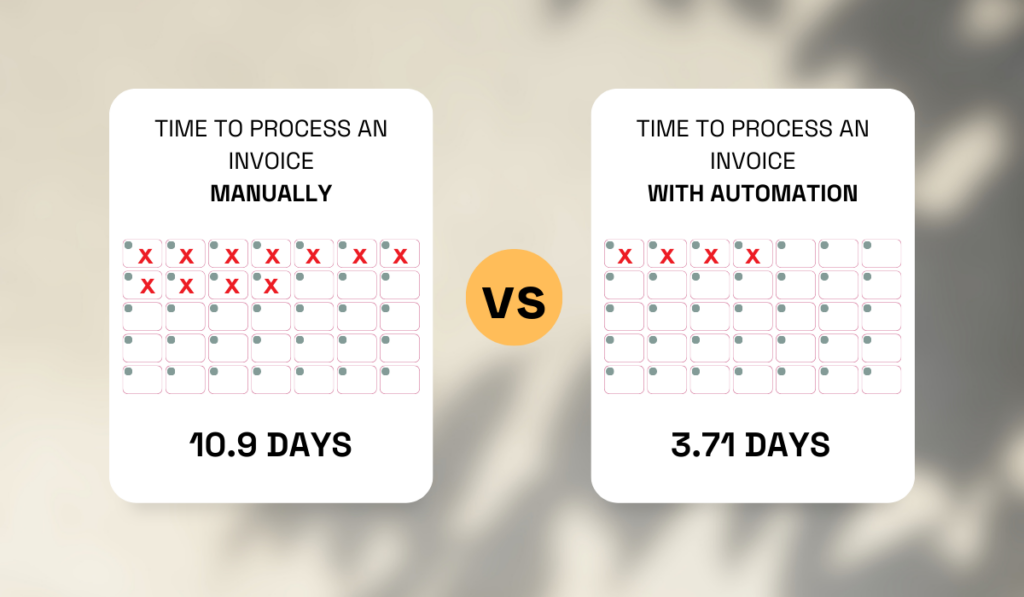What Is Procurement Efficiency


The most efficient procurement is the one where you get top-quality products and services at the best prices, precisely when and where you need them.
However, achieving this level of procurement efficiency hinges on having fast and effective procurement processes in place.
They free up your procurement teams to focus on value-added tasks instead of getting bogged down in time-consuming and error-prone activities.
Moreover, these processes enable you to negotiate the best deals, as well as ensure stability during supply chain disruptions.
Today, we’re here to shine a light on procurement efficiency: why it’s crucial and what role automation plays in all of it.
Let’s get straight to the heart of the matter.
Efficiency is the ability to accomplish something with the least waste of time and effort.
In procurement, this means acquiring goods and services in a way that minimizes the consumption of resources while still meeting quality and delivery requirements.
Imagine you’re tasked with procuring office supplies for your department.
Efficient procurement would involve identifying exactly what you need, finding the best suppliers offering the highest quality products at competitive prices, negotiating favorable terms, and ensuring timely delivery—all while minimizing unnecessary steps, delays, and costs.
Therefore, to achieve procurement efficiency, you need to optimize every stage of the process, from initial purchase requisition to final delivery.
This requires you to embrace digital transformation and automation to streamline workflows and eliminate manual tasks.
Take IBM, for example.

Illustration: Veridion / Quote: IBM
By integrating digital intelligence and cloud technology into their procurement operations, they revolutionized their processes.
For instance, intelligent workflows reduced pricing analysis from two days to just 10 minutes, and supplier onboarding was accelerated by 10 times.
This saved them time and improved overall efficiency and effectiveness.
And IBM is not the only company that recognized the power of digitization on procurement efficiency.
Deloitte’s Global Chief Procurement Officer Survey showed us that as much as 72% of CPOs marked digital transformation as one of their top priorities in 2023.

Illustration: Veridion / Data: Deloitte
Digitization (and automation that goes hand in hand) also generates valuable data, another key component of procurement efficiency.
By analyzing this data, you can get insights into supplier performance, market trends, and potential areas for cost savings and process improvements.
For instance, tracking supplier delivery times and product quality allows you to identify reliable partners and avoid disruptions in your supply chain.
Having real-time data visibility into your inventory, for example, allows you to optimize inventory levels and prevent over- or under-stocking, or in other words—waste.
Finally, continuous improvement is essential for procurement efficiency.
You should always be looking for ways to refine your processes, whether it’s through optimizing workflows, renegotiating contracts for better terms, or adopting innovative technologies.
Embracing a culture of continuous improvement and leveraging the power of data and technology is the only way to ensure that your procurement operations are efficient, effective, and agile.

Source: Veridion
In summary, procurement efficiency involves optimizing processes, leveraging technology, and harnessing data to achieve procurement goals with minimal waste and maximum value.
It’s about working smarter, not harder, to drive continual improvement and ensure effective procurement operations.
Deloitte’s survey we mentioned above shed light on more aspects of procurement that CPOs prioritize.
Here they are:

Illustration: Veridion / Data: Deloitte
What if we told you that procurement efficiency is the key to unlocking all of them?
Well—it is.
In the next three sections, we will show you how efficient procurement leads to cost savings, higher operational efficiency, and improved supply chain stability.
Cost savings remain a top priority for procurement professionals, and an efficient procurement is the way to achieve it.
Namely, efficient procurement processes enable you to negotiate better deals with suppliers, identify all kinds of cost-saving opportunities, and minimize unnecessary spending.
Let’s explore how this unfolds.
Firstly, through strategic sourcing and enhanced supplier management, organizations can consolidate their purchasing volume, thereby leveraging their bargaining power to secure advantageous terms, like bulk discounts or extended contracts.
For example, a manufacturer of automotive components might secure lower prices by committing to larger order quantities, leading to substantial cost savings over time.
On top of that, the scope of procurement efficiency involves identifying inefficiencies within existing processes and their subsequent optimization.
For instance, a consumer goods company might conduct a detailed analysis of its supply chain to pinpoint areas ripe for cost reduction, such as exploring alternative material sources or adopting just-in-time inventory management practices.
Conversely, inefficient procurement processes pose challenges and contribute to inflated costs.
Errors, delays, and non-compliance with contracts or regulations often result in unnecessary spending.
Yet, as these inefficiencies are addressed and fixed, tangible cost savings materialize.
Consider the case of a financial institution in the Asia Pacific region highlighted in IBM’s Smart Procurement Made Smarter report.
By standardizing and automating its source-to-pay services, the institution resolved issues related to contract and regulatory compliance, streamlined supplier payments, and bolstered spend visibility.
This overhaul yielded significant cost savings, including $20 million in reduced operating costs and the prevention of over $70 million in duplicate and erroneous payments.

Illustration: Veridion / Data: IBM
To sum up, procurement efficiency enables cost savings by optimizing sourcing and supplier management, identifying cost-saving opportunities, and minimizing unnecessary spending through standardized, digitized, and automated processes.
So, when you embrace procurement efficiency, you can enhance your bottom line and increase profitability, ultimately driving long-term success for your organization.
Efficient procurement practices not only drive cost savings but also significantly enhance operational efficiency within organizations.
One of the key drivers behind this efficiency is automation.
And this is crucial if we consider that manual processes are costing organizations millions in staff time each year.
Namely, they hinder teams from focusing on strategic priorities, as Alex Saric from Ivalua, a provider of cloud-based procurement software, points out:

Illustration: Veridion / Quote: Ivalua
Efficient procurement streamlines processes, reduces lead times, and eliminates bottlenecks, resulting in smoother operations and improved productivity.
When you automate routine tasks such as purchase requisitions, supplier onboarding, and invoice processing, you can reduce manual effort and human error, thereby freeing up valuable time and resources.
This increases overall efficiency and empowers procurement teams to deliver greater value to the organization.
Moreover, efficient procurement provides real-time visibility into procurement activities.
This enables stakeholders to track orders, monitor supplier performance, and identify potential issues more effectively.
On top of that, it facilitates faster decision-making and ensures better resource allocation, ultimately improving operational efficiency.
Additionally, efficient procurement practices promote compliance with regulatory requirements, contracts, and internal policies.
Through the automation of compliance checks and processes, you can mitigate non-compliance risks and associated penalties, thereby enhancing operational efficiency and minimizing legal risks.
The example of a financial institution in the Asia Pacific further illustrates the tangible benefits of efficient procurement on operational efficiency.

Source: IBM
With over 99% of invoices paid on time and more than 95% of queries resolved within one business day, the organization demonstrates exceptional efficiency in its procurement processes, which is attributed to automation.
Efficient procurement practices are crucial for maintaining a stable supply chain, especially in dynamic markets prone to constant risks and disruptions, such as those experienced during the COVID-19 pandemic.
Companies worldwide faced significant challenges during the pandemic, including shortages of critical parts and materials, delayed shipments, longer lead times, and difficulties in adjusting production capacity to meet fluctuating demand.

Source: Capgemini
For many organizations, recovery from these challenges took more than three months, as reported by the Capgemini Research Institute.
And while it’s tempting to view COVID-19 as an unforeseeable event, companies like AGCO Corporation, a leading American agricultural machinery manufacturer, demonstrate that efficient procurement practices can minimize supply chain disruptions even amid such unpredictability.
AGCO’s response to the pandemic is a prime example of how efficient procurement practices enhance supply chain stability.
Here’s a closer look at their approach:
| Proactive risk management | AGCO recognized the impending threat early and established a dedicated task force to manage the crisis, demonstrating proactive risk management. |
| Stakeholder coordination | Regular communication channels were established between AGCO’s headquarters and global facilities, involving key stakeholders such as plant managers, materials and logistics managers, and finance personnel. This ensured alignment and coordination in response to evolving challenges. |
| Diversified sourcing | AGCO diversified its sourcing options and prioritized critical supplies, such as personal protective equipment (PPE), to ensure uninterrupted operations. By amassing and distributing PPEs to critical suppliers, AGCO secured preferential treatment and maintained a continuous supply chain. |
| Adapted transportation methods | The company adapted its transportation methods, opting for rail over sea freight to expedite deliveries and minimize disruptions. |
| Compliance with safety protocols | AGCO adjusted its production processes and workstations to comply with safety protocols, ensuring a safe working environment for employees. |
Now, the question is: how could they do all this in a timely manner?
In short, for years, AGCO has been using risk notification and visualization solutions to monitor its supply chain and anticipate potential disruptions.
This proactive and agile approach enabled them to predict shutdowns in advance and take measures to mitigate their impact.
In summary, AGCO’s response to the COVID-19 pandemic closely aligns with efficient procurement practices.
By implementing proactive risk management, maintaining strong supplier relationships, diversifying sourcing options, streamlining processes, and making data-driven decisions, AGCO effectively minimized supply chain disruptions and ensured business continuity.
This example underscores the critical role that procurement efficiency plays in enhancing supply chain stability, particularly during times of crisis.
Mike Gilfix, former VP of Data & AI Product Management at IBM, eloquently characterizes automation as “the gift of time:”
“Automation is the gift of time. It’s an opportunity for people in many different roles to use their time differently to create more value. It’s an opportunity to dramatically unlock the power of labor to focus on what matters most.”
His words capture the essence of how automation profoundly impacts efficient procurement.
In procurement, automation revolutionizes operations by streamlining repetitive and time-consuming tasks such as purchase order generation, invoice processing, and even supplier communication.
By eliminating manual errors and slashing processing times, automation significantly boosts efficiency.
Take invoice processing, for example.
According to the Ardent State of ePayables 2022 report, manually processing a single invoice averages a staggering 10.9 days.
Contrastingly, automation reduces this timeline to just 3.71 days, marking a significant improvement.

Illustration: Veridion / Data: Medius
Moreover, automation optimizes approval workflows by eliminating unnecessary steps, ensuring smoother processes and swifter decision-making.
And the tools available for automation are as diverse as they are powerful.
From e-procurement software to contract management platforms, from supplier relationship management (SRM) tools to spend analysis solutions.
Each tool empowers procurement teams to operate smarter and faster, driving efficiency across the board.
Speed is paramount, particularly in supplier sourcing, where manual processes can drag on for up to three months—a luxury unaffordable in times of supply chain disruptions.
As Maggie Brommer, head of procurement for Unilever’s Prestige Products, emphasizes, agility in finding alternative suppliers is critical during crises:
“When there is a supply-chain crisis, the key to being competitive is to be faster at finding alternative suppliers than everyone else.”
The most practical path lies in leveraging procurement automation tools, such as our Veridion—an AI-powered platform offering a comprehensive, up-to-date supplier database.
Veridion’s company search service allows businesses to access a vast network of over 25 million suppliers and 300 million products in minutes.

Source: Veridion
This speeds up supplier sourcing, empowers you to choose from a much bigger pool of potential suppliers, and helps you find the perfect match that checks all your supplier requirements, ranging from product specifications to supplier certifications and ESG criteria.

Source: Veridion
In essence, automating procurement doesn’t just accelerate processes—it elevates them.
By minimizing errors, streamlining operations, and enhancing decision-making, automation enhances efficiency and effectiveness throughout the procurement lifecycle.
Nonetheless, despite the clear benefits, the journey toward full digitization remains ongoing.
Recent research by Ivalua reveals that 53% of procurement and supplier management processes have yet to undergo digital transformation.
Until then, manual processes continue to impede efficiency, with procurement teams estimating they waste over a fifth of their time annually on paper-based or manual tasks.
As we conclude our exploration of procurement efficiency, it’s evident that this concept is multifaceted and encompasses a range of strategies and practices.
From optimizing supplier relationships to implementing effective sourcing strategies and leveraging advanced analytics, every aspect plays a crucial role.
And while some of the statistics we mentioned may not portray the most optimistic outlook, they serve as a call to action.
They highlight the importance of embracing automation as a key enabler for true efficiency in procurement.
So, as you reflect on the insights shared, remember that procurement efficiency is multidimensional, but it all begins with automating your procurement processes.